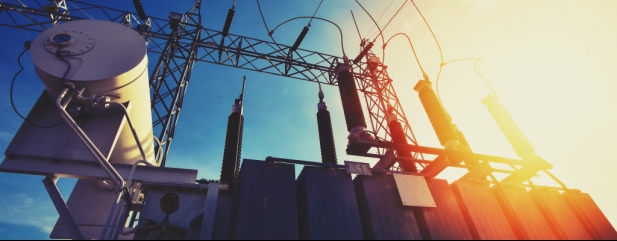Archived article
Please note that tax, investment, pension and ISA rules can change and the information and any views contained in this article may now be inaccurate.
Energy storage theme offers growth and tasty dividends

Many investors are well versed in the attractions of renewable energy as an investment theme, and retail fund flows into green energy
and environmental funds continued unabated even during the market sell-off caused by the pandemic.
The move to a zero-carbon future will increase the need for energy storage capacity, and one less well-researched area of the clean energy market is battery energy storage.
In this article we look at the role of grid battery storage and the potential for its usage to grow both in the UK and abroad, together with two ways for investors to play the theme and collect very attractive dividends.
ZERO-CARBON GOAL
Earlier this year, for the first time since the Industrial Revolution, the UK enjoyed two months without using any coal-fired power, and by the middle of the decade National Grid (NG.) expects to be able to operate for short periods without using natural gas either.
For renewables to fully replace fossil fuels on a permanent basis, solar and wind farms would need to be built on a mammoth scale. Unlike conventional power plants, which run efficiently at a scale of 500 megawatts and above, wind and solar plants are far less compact and peak efficiency is typically in the low hundreds of megawatts, so we are going to need a lot more of them.
Also, as Bloomberg’s New Energy Finance chief economist Seb Henbest points out, because it’s not always sunny or windy, each megawatt of solar and wind capacity produces less electricity than the equivalent amount of coal, gas or nuclear.
‘To replace 500 megawatts of coal power takes around 1,500 megawatts of wind capacity, and about 3,000 megawatts of solar,’ says Henbest. ‘Wind and solar capacity take up far more physical space than traditional power plants – 7.6 hectares per megawatt for wind and 1.7 hectares per megawatt for solar.’
Onshore wind and solar is meant to supply close to 50% of global electricity by 2050, but that would take up more than 423,000 square kilometres. If everyone switched to electric vehicles, and buildings also went electric in order to limit climate warming to 2 degrees Celsius in line with the Paris Climate Accord, the amount of land needed by 2050 would be roughly the size of Turkey.
BACK-UP PLAN
Given that we can’t build enough solar and wind farms to reach the 2050 targets, and given the unreliability of these sources of renewable energy, there needs to be a back-up system which can supply energy to the grid reliably, as and when it is needed, at low cost and with low emissions.
Grid-connected energy storage ‘is a key enabler of the energy transition and clearly seen as a major tool to achieve the emissions targets linked to the Paris agreement’, says Patrick Clerens, secretary general of the European Association for the Storage of Energy.
The European Union has already integrated energy storage into its clean energy for all Europeans package, as a way of decarbonising the electricity network as well as providing critical capacity. Consultant IHS Markit believes that annual global battery storage installations are set to rise five-fold from 2019 to 2025.
‘The increasing competitiveness and critical role of battery energy storage assets in supporting the decarbonisation and resilience of the electricity system means that opportunities for energy storage continue to develop despite the turmoil caused by the COVID-19 pandemic,’ says IHS Markit energy storage service research manager Julian Jansen.
GREEN STIMULUS
While the US is the biggest market for grid battery storage, Europe has invested heavily in the last few years and climate change is front and centre in economic decision-making.
As part of its ground-breaking recovery plan, the European Union set aside €500 billion in green stimulus funds to develop clean energy resources, make farming more sustainable, increase the market for electric vehicles and promote energy efficiency.
‘Never before has so much of an EU budget been allocated to combating climate change,’ said German environment minister Svenja Schulze.
Germany has earmarked a third of its €130 billion recovery budget for environmental issues such as public transport, electric vehicle subsidies and green hydrogen.
Moreover, the European Union is looking to take the lead in tackling climate change and is considering raising the bar for its 2030 emissions reduction target to up to 55% from the current target of 40%, a move which will require even greater spending on clean energy.
TIPPING POINT
Among the many other ramifications of the US elections in November, a Democrat victory could be the tipping point for green investment on a global scale.
The position of the two candidates couldn’t be further apart, with Trump continuing to extol fossil fuels – unsurprisingly, given energy producers are his major financial backers – and Biden pledging to achieve net zero greenhouse gas emissions by 2035.
Biden’s infrastructure plan includes installing 500 million solar panels, 60,000 wind turbines, 500,000 electric vehicle charging points and a green power grid including more battery energy storage plants.
The Democratic candidate would also commit the US to rejoining the Paris Climate Accord. According to Simon Webber, a fund manager at Schroders, ‘a Biden presidency could see the US and Europe work together to put pressure on China to meet its climate commitments’.
He adds: ‘The trade dispute with the US and the US’s own flagging commitment to the climate agenda has provided a fig leaf for China to hide behind on the climate change issue. However, China is eager to be a global leader and would not want to be perceived as a laggard on such an important issue.’
HOW DOES ENERGY STORAGE WORK?
Energy storage batteries are like capacitors in that they can be repeatedly charged and can release their energy rapidly as a back-up supply either to the energy grid or to an industrial customer such as a manufacturing plant.
Lithium-ion batteries are a well-established technology. As manufacturing techniques have improved and more competitors have entered the market in recent years prices have fallen which is good for the operators.
As well as balancing supply and demand, there are other revenue streams for energy storage projects such as frequency response services and capacity market services. In future there may be opportunities to arbitrage power supply.
The UK has committed to reducing greenhouse gas emissions by 80% by 2050, and National Grid predicts installed capacity of energy storage will need to roughly double to 13 gigawatts by 2030 as the greater use of ‘intermittent renewables’ increases the need for flexibility.
Two energy storage investment trusts
There are two pure-play UK investment trusts which invest in energy storage, being Gore Street Energy Storage Fund (GSF) and Gresham House Energy Storage Fund (GRID).
Gore Street Energy Storage Fund (GSF)
Gore Street Energy Storage Fund invests in a portfolio of utility-scale energy storage projects, primarily in the UK. As well as capital growth it aims to pay an annual dividend of 7% of net asset value supported by a projected internal rate of return (IRR) of between 10% and 12%.
As of the end of June the firm had 189 megawatts of installed storage with four of its sites producing income, up from two sites previously. It also has 160 megawatts of capacity being built in northern and southern Ireland which should come on stream next year, and a 50 megawatt project in Scotland, which is expected to come on stream in 2022.
The pipeline of future projects which meet its return profile is 900 megawatts, of which 151 megawatts is under exclusive negotiations and includes an operational portfolio of 81 megawatts in the UK.
Gresham House Energy Storage Fund is the UK’s largest investor in energy storage assets. The fund earns revenues by buying excess energy supply when prices are low, storing it before selling back to the market at a higher price when demand is higher or when renewable supply is lower, or a mix of both.
The fund targets a total return of 8% a year once the fund is fully invested, before leverage and after fees, while providing investors with an attractive and sustainable dividend yield covered by operating income. It is currently yielding 6.1%, according to data from the Association of Investment Companies.
The demand for energy storage is expected to grow rapidly in response to an increasing supply-demand imbalance caused by the growing share of renewable energy at the expense of coal and gas.
The management team believe the market has reached a tipping point where every additional unit of power generation will cause an increasing oversupply at certain times while also reducing the market available for baseload, forcing carbon generation out of existence and creating a deeper trough in generation when renewables do not generate.
The amount of excess renewable power generation is estimated to reach 10 gigawatts within the next four years and could reach 30 gigawatts within the next decade.
Gresham House Energy Storage Fund (GRID)
Gresham House Energy Storage Fund operates the largest energy storage assets in the UK and is the number one player with around 30% market share. A recent change in the legislation allows larger projects of the sort that Gresham House Energy Storage Fund focuses on to gain planning permission without the need for government approval, speeding up the development time.
Important information:
These articles are provided by Shares magazine which is published by AJ Bell Media, a part of AJ Bell. Shares is not written by AJ Bell.
Shares is provided for your general information and use and is not a personal recommendation to invest. It is not intended to be relied upon by you in making or not making any investment decisions. The investments referred to in these articles will not be suitable for all investors. If in doubt please seek appropriate independent financial advice.
Investors acting on the information in these articles do so at their own risk and AJ Bell Media and its staff do not accept liability for losses suffered by investors as a result of their investment decisions.
Issue contents
Editor's View
Feature
Great Ideas
News
- BT takeover hopes shot down by analysts
- Balfour Beatty's £2bn contract win fails to move its shares
- BlackRock World Mining’s ’decade of lost returns’
- Analysts say Greencoat Renewables cannot justify premium rating
- M&A revival predicted after worst first-half for deals since 2010
- Investor hopes raised over Covid treatments

 magazine
magazine












